Jyotiba Temple: Best of History, Architecture, Festivals, and Travel Guide
- Location: Kolhapur
- Entry Fee: Free
- Timings: 5:00 AM – 9:00 PM daily
- Categories: Religious /Spiritual Sites, Temple, Tourist Places
- Tags: Chaitra Purnima Jyotiba Yatra, Chaitra Yatra, Jyotiba Temple, Jyotiba Temple history, Jyotiba Temple Kolhapur, Kolhapur Pilgrimage, Maharashtra Temples, Pink temple Maharashtra, Spiritual India, Spiritual places in Maharashtra
- Location Taxonomy: India, Kolhapur, Maharashtra
Perched atop the scenic hills of Wadi Ratnagiri near Kolhapur, Maharashtra, the Jyotiba Temple is a revered Hindu pilgrimage site that blends mythology, history, and vibrant cultural traditions. Dedicated to Lord Jyotiba—a divine incarnation of Brahma, Vishnu, and Mahesh—the temple is a symbol of justice, protection, and spiritual strength. With its striking pink façade, ancient architecture, and grand annual fairs, Jyotiba Temple attracts lakhs of devotees and tourists every year.
This article offers a complete guide to the Jyotiba Temple, covering its origin, architectural features, festivals, travel tips, and frequently asked questions.
Mythological Significance of Jyotiba Temple
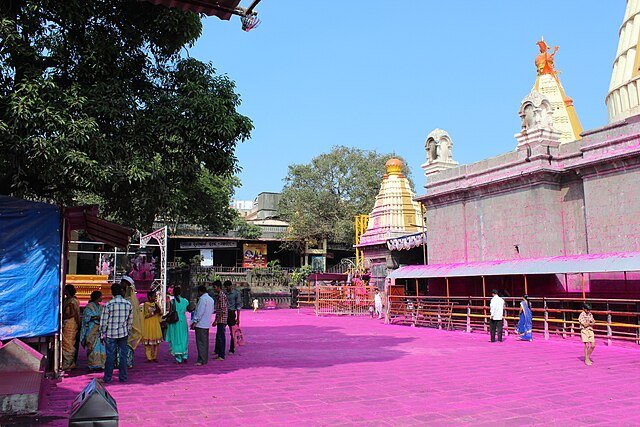
According to legend, Lord Jyotiba was born to defeat the demon brothers Ratnasur and Raktabhoj, who terrorized the gods and sages. Goddess Mahalakshmi, the presiding deity of Kolhapur, sought Jyotiba’s help in restoring peace. With immense power and divine support, Jyotiba vanquished the demons and established his kingdom on the mountain where the temple now stands.
Jyotiba is considered a guardian deity, especially by communities like the Dhangars and Malis. Devotees believe he grants justice, protects from evil, and blesses with prosperity, fertility, and courage.
Historical Background of Jyotiba Temple
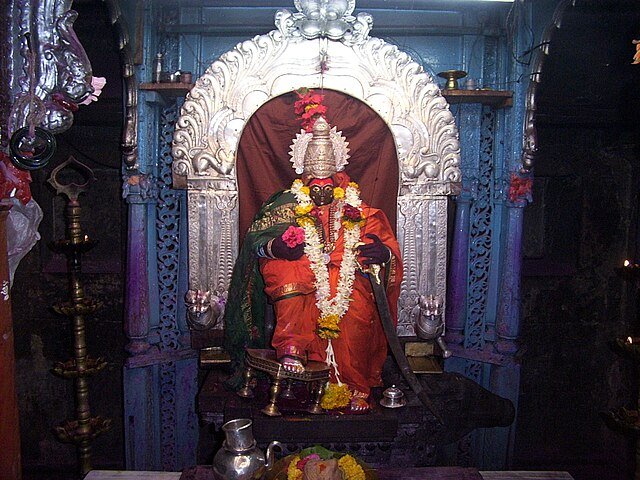
- Original Shrine: Built by Navaji Sayaji in the 18th century
- Main Temple: Constructed in 1730 by Ranoji Shinde
- Kedareshwar Temple: Built in 1808 by Daulatrao Shinde
- Ramling Temple: Added in 1780 by Malji Nilam Panhalkar
The temple complex has evolved over centuries, with contributions from Maratha rulers and local devotees. The site is also linked to the Nath Sampradaya and reflects deep spiritual roots in Maharashtra’s religious landscape.
Architectural Features of Jyotiba Temple
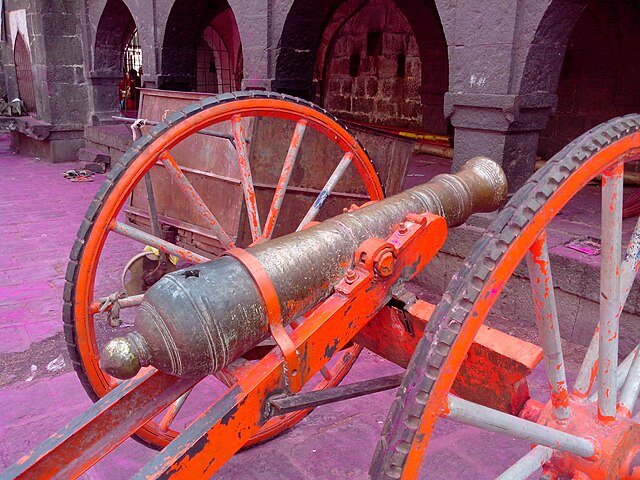
The Jyotiba Temple showcases a blend of Hemadpanti and Deccan architectural styles, using black basalt stone and locally sourced limestone that gives the temple its signature pink hue.
Key Highlights:
- Main Shrine Dimensions: 57 ft x 37 ft x 77 ft (including spire)
- Kedareshwar Temple: 49 ft x 22 ft x 89 ft
- Ramling Temple: 13 ft x 13 ft x 40 ft
- Deepmalas (Lamp Towers): Tall, intricately carved towers lit during festivals
- Carvings: Mythological motifs, floral patterns, and geometric designs
- Courtyard: Spacious area for devotees and processions
The temple’s shikhara (spire) is adorned with images of gods, goddesses, and celestial beings, reflecting the craftsmanship of the Vishwakarma Kula artisans.
Festivals Celebrated at Jyotiba Temple
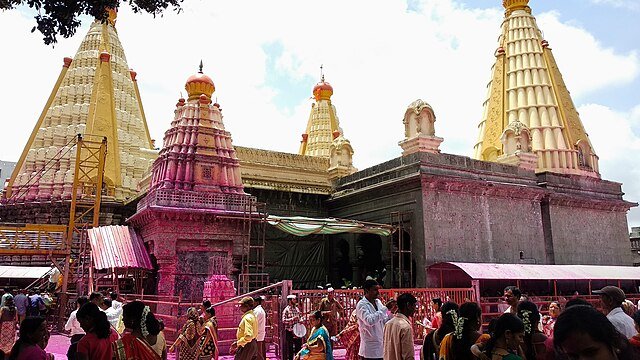
1. Chaitra Purnima (March–April)
- The biggest annual fair
- Devotees arrive with tall “Sasan” sticks in grand processions
- Gulal (pink powder) is thrown in celebration, turning the entire hill pink
- Cultural performances, bhajans, and community feasts
2. Vaishakha Purnima
- Another major fair with similar rituals and offerings
3. Dussehra
- Devotees seek blessings for protection and prosperity
4. Sunday Worship
- Every Sunday is considered auspicious for Jyotiba
- Regular rush of devotees for darshan and offerings
Location and Accessibility
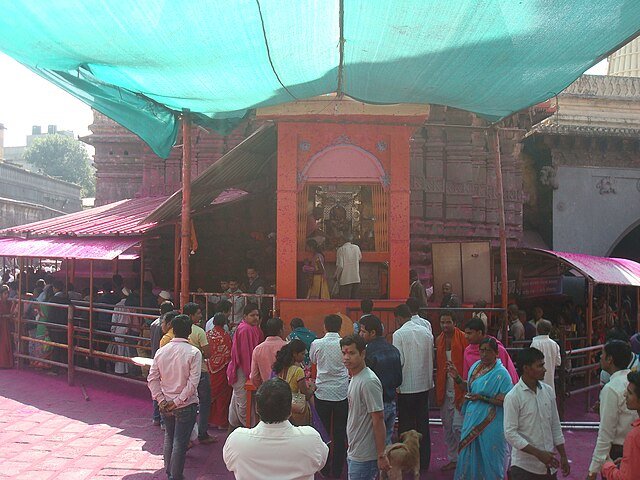
- District: Kolhapur, Maharashtra
- Altitude: 3,124 feet above sea level
- Distance from Kolhapur: 18 km northwest
- Nearest Railway Station: Kolhapur Railway Station
- Nearest Airport: Kolhapur Airport (30 km); Pune Airport (230 km)
How to Reach:
- Regular buses and taxis available from Kolhapur city
- Private vehicles can drive up to the temple base
- Pilgrims often walk the final stretch during festivals
Temple Timings and Rituals
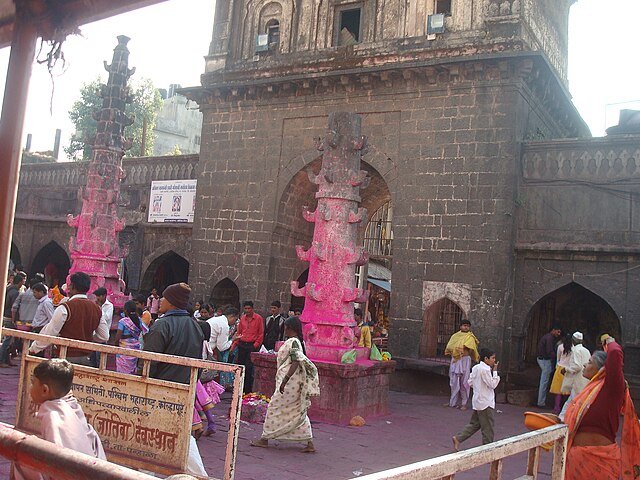
- Opening Hours: 5:00 AM – 9:00 PM daily
- Aarti Timings: Morning and evening aartis held with devotional singing
- Offerings: Flowers, coconuts, gulal, and sweets
- Prasad: Distributed to devotees after darshan
Things to See at Jyotiba Temple (List View)
- Main Jyotiba Shrine
- Kedareshwar Temple
- Ramling Temple
- Deepmalas (Lamp Towers)
- Pink Temple Walls (due to gulal)
- Sasan Sticks during Yatra
- Courtyard and Procession Grounds
- Hilltop Viewpoints
- Local Shops and Stalls
- Devotional Art and Carvings
Nearby Tourist Attractions
- Mahalakshmi Temple, Kolhapur (18 km): One of the Shakti Peethas
- Rankala Lake (20 km): Scenic lake with boating and gardens
- Panhala Fort (25 km): Historic Maratha fort
- New Palace Museum (22 km): Royal artifacts and architecture
- Kopeshwar Temple, Khidrapur (50 km): Ancient Shiva temple
Travel Tips for Visitors
- Wear comfortable footwear for walking on temple steps
- Carry water and snacks, especially during festivals
- Respect local customs and dress modestly
- Avoid peak hours if you prefer a peaceful darshan
- Participate in aarti and bhajans for a spiritual experience
❓ FAQs about Jyotiba Temple
Q1: Who is Lord Jyotiba?
A: Lord Jyotiba is a divine incarnation of Brahma, Vishnu, and Mahesh, born to defeat demons and restore peace.
Q2: Why is Jyotiba Temple called the Pink Temple?
A: During festivals, devotees throw gulal (pink powder), turning the entire temple complex pink.
Q3: What is the best time to visit Jyotiba Temple?
A: Chaitra Purnima (March–April) is the most vibrant time, but October to February offers pleasant weather.
Q4: How far is Jyotiba Temple from Kolhapur?
A: About 18 km northwest of Kolhapur city.
Q5: Are there accommodations near Jyotiba Temple?
A: Yes, Kolhapur offers hotels, lodges, and guesthouses for pilgrims and tourists.
🌅 Conclusion
The Jyotiba Temple is more than a religious site—it is a living symbol of Maharashtra’s spiritual heritage, community devotion, and architectural brilliance. Whether you’re drawn by the legends of Lord Jyotiba, the vibrant pink festivals, or the serene hilltop views, this temple offers a deeply enriching experience. From its mythological roots to its modern-day celebrations, Jyotiba Temple continues to inspire faith, unity, and cultural pride.
